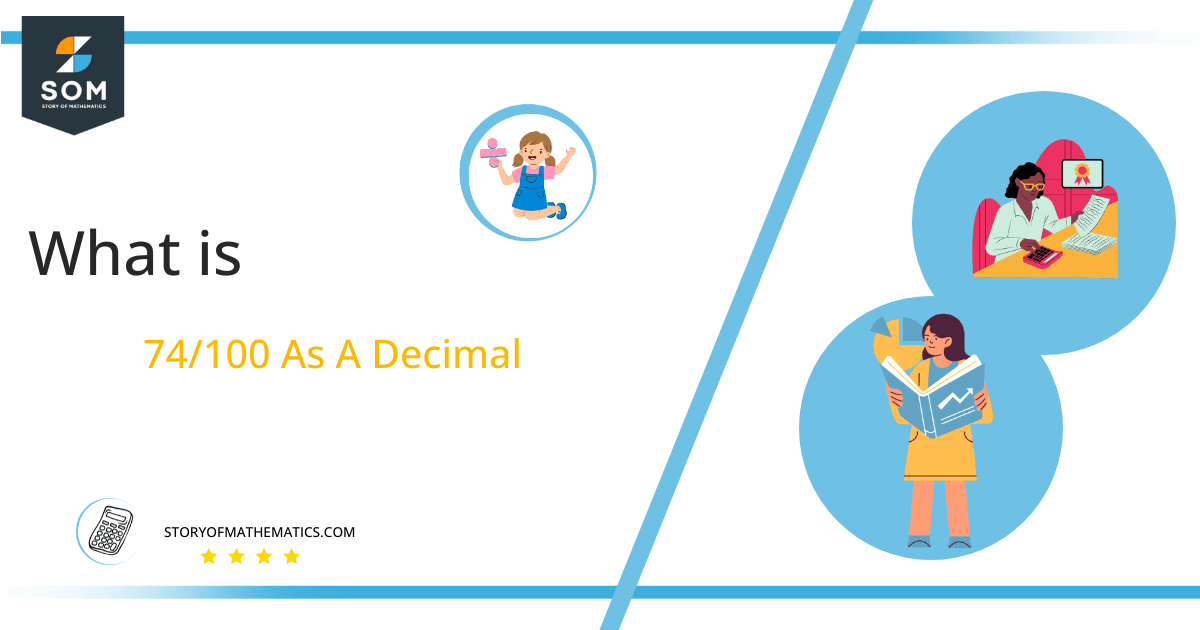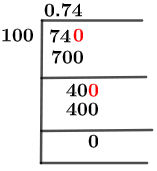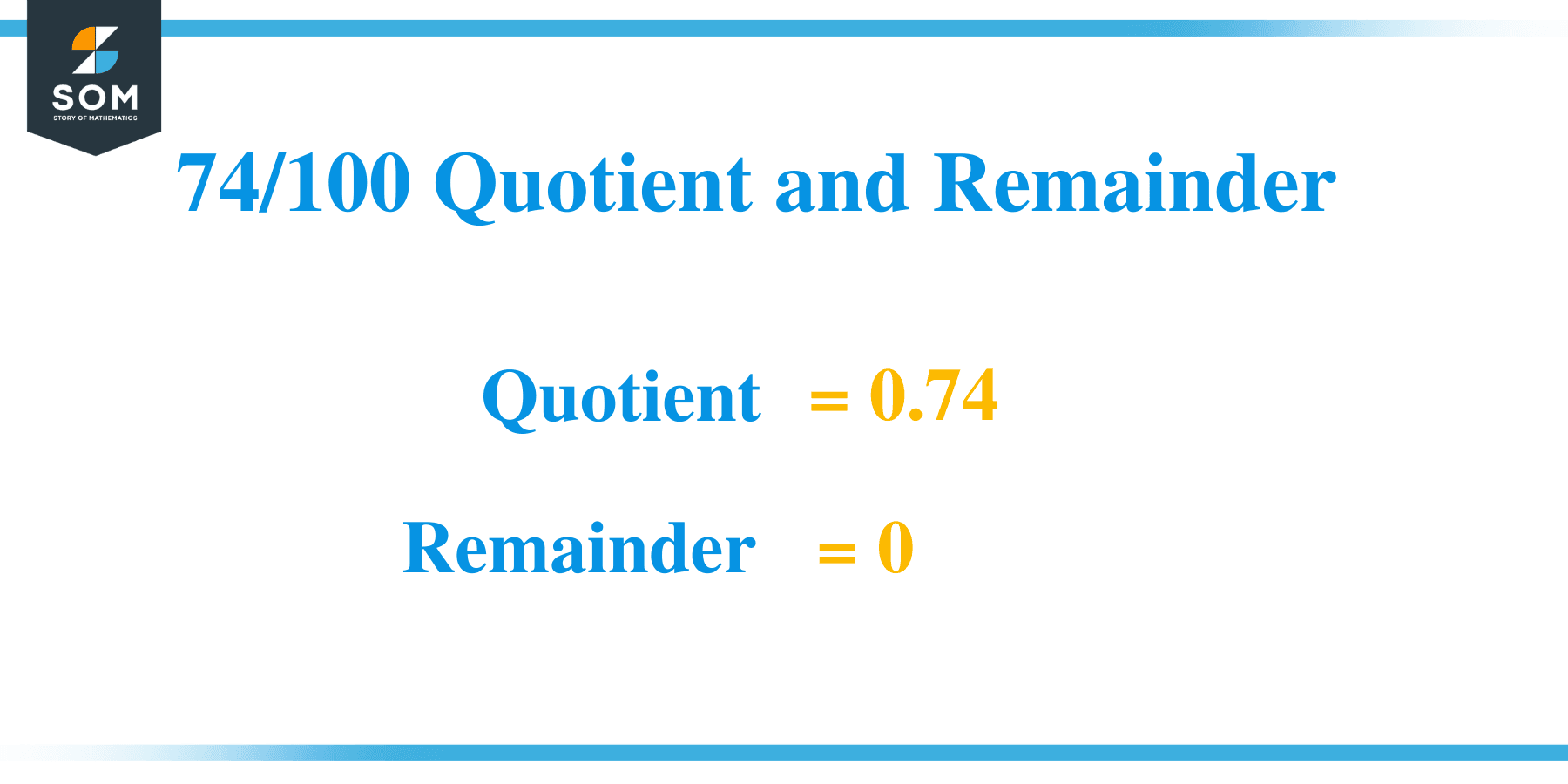What Is 74/100 as a Decimal + Solution With Free Steps
The fraction 74/100 as a decimal is equal to 0.74.
A Denominator should not equal zero while expressing rational numbers in the division. Moreover, it can be written as p/q. 0 is also a Rational number. Irrational numbers can not be expressed in fraction form. That’s why they cannot be written in p/q form.
Here, we are more interested in the division types that result in a Decimal value, as this can be expressed as a Fraction. We see fractions as a way of showing two numbers having the operation of Division between them that result in a value that lies between two Integers.

Now, we introduce the method used to solve said fraction to decimal conversion, called Long Division, which we will discuss in detail moving forward. So, let’s go through the Solution of fraction 74/100.
Solution
First, we convert the fraction components, i.e., the numerator and the denominator, and transform them into the division constituents, i.e., the Dividend and the Divisor, respectively.
This can be done as follows:
Dividend = 74
Divisor = 100
Now, we introduce the most important quantity in our division process: the Quotient. The value represents the Solution to our division and can be expressed as having the following relationship with the Division constituents:
Quotient = Dividend $\div$ Divisor = 74 $\div$ 100
This is when we go through the Long Division solution to our problem.

Figure 1
74/100 Long Division Method
We start solving a problem using the Long Division Method by first taking apart the division’s components and comparing them. As we have 74 and 100, we can see how 74 is Smaller than 100, and to solve this division, we require that 74 be Bigger than 100.
This is done by multiplying the dividend by 10 and checking whether it is bigger than the divisor or not. If so, we calculate the Multiple of the divisor closest to the dividend and subtract it from the Dividend. This produces the Remainder, which we then use as the dividend later.
Now, we begin solving for our dividend 74, which after getting multiplied by 10 becomes 740.
We take this 740 and divide it by 100; this can be done as follows:
740 $\div$ 100 $\approx$ 7
Where:
100 x 7 = 700
This will lead to the generation of a Remainder equal to 740 – 700 = 40. Now this means we have to repeat the process by Converting the 40 into 400 and solving for that:
400 $\div$ 100 $\approx$ 4
Where:
100 x 4 = 400
This, therefore, produces another Remainder which is equal to 400 – 400= 0.

Images/mathematical drawings are created with GeoGebra.
